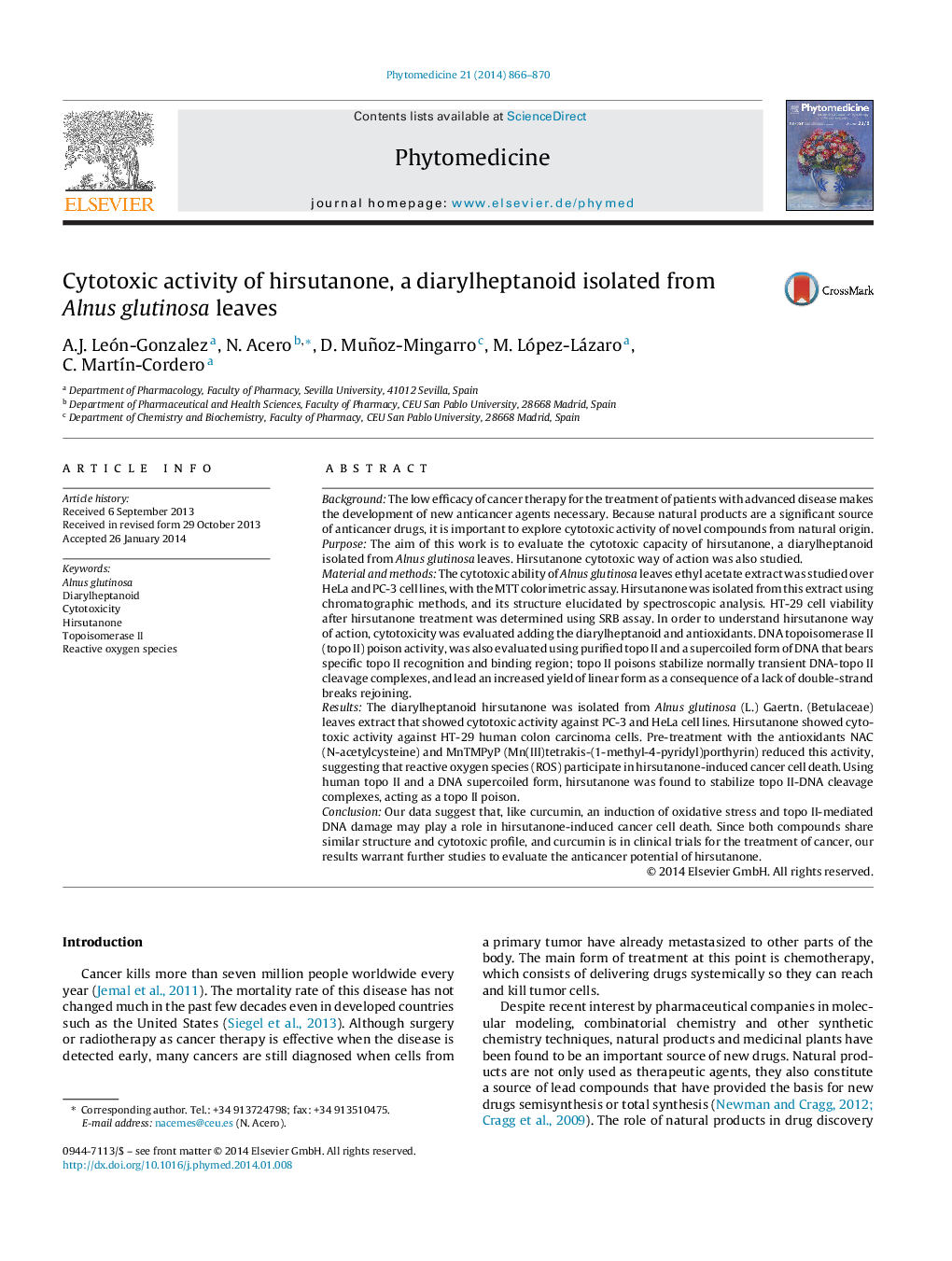| Article ID | Journal | Published Year | Pages | File Type |
|---|---|---|---|---|
| 5816563 | Phytomedicine | 2014 | 5 Pages |
BackgroundThe low efficacy of cancer therapy for the treatment of patients with advanced disease makes the development of new anticancer agents necessary. Because natural products are a significant source of anticancer drugs, it is important to explore cytotoxic activity of novel compounds from natural origin.PurposeThe aim of this work is to evaluate the cytotoxic capacity of hirsutanone, a diarylheptanoid isolated from Alnus glutinosa leaves. Hirsutanone cytotoxic way of action was also studied.Material and methodsThe cytotoxic ability of Alnus glutinosa leaves ethyl acetate extract was studied over HeLa and PC-3 cell lines, with the MTT colorimetric assay. Hirsutanone was isolated from this extract using chromatographic methods, and its structure elucidated by spectroscopic analysis. HT-29 cell viability after hirsutanone treatment was determined using SRB assay. In order to understand hirsutanone way of action, cytotoxicity was evaluated adding the diarylheptanoid and antioxidants. DNA topoisomerase II (topo II) poison activity, was also evaluated using purified topo II and a supercoiled form of DNA that bears specific topo II recognition and binding region; topo II poisons stabilize normally transient DNA-topo II cleavage complexes, and lead an increased yield of linear form as a consequence of a lack of double-strand breaks rejoining.ResultsThe diarylheptanoid hirsutanone was isolated from Alnus glutinosa (L.) Gaertn. (Betulaceae) leaves extract that showed cytotoxic activity against PC-3 and HeLa cell lines. Hirsutanone showed cytotoxic activity against HT-29 human colon carcinoma cells. Pre-treatment with the antioxidants NAC (N-acetylcysteine) and MnTMPyP (Mn(III)tetrakis-(1-methyl-4-pyridyl)porthyrin) reduced this activity, suggesting that reactive oxygen species (ROS) participate in hirsutanone-induced cancer cell death. Using human topo II and a DNA supercoiled form, hirsutanone was found to stabilize topo II-DNA cleavage complexes, acting as a topo II poison.ConclusionOur data suggest that, like curcumin, an induction of oxidative stress and topo II-mediated DNA damage may play a role in hirsutanone-induced cancer cell death. Since both compounds share similar structure and cytotoxic profile, and curcumin is in clinical trials for the treatment of cancer, our results warrant further studies to evaluate the anticancer potential of hirsutanone.
Graphical abstractHirsutanone induce oxidative stress and topo II-mediated DNA damage in HT-29 cell line as possible cytotoxic way of action.Download high-res image (84KB)Download full-size image
